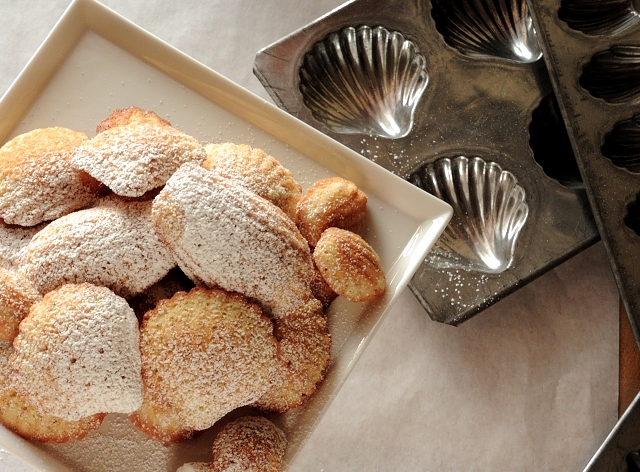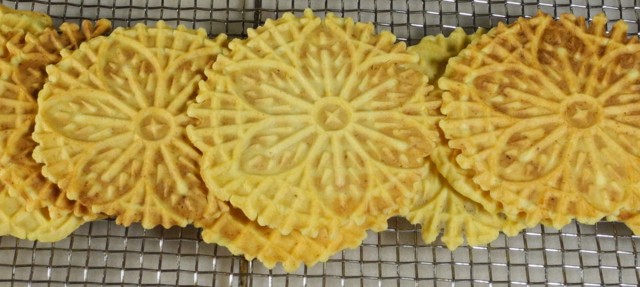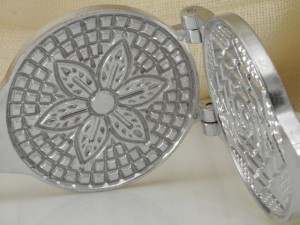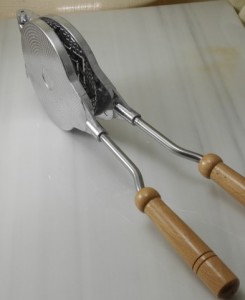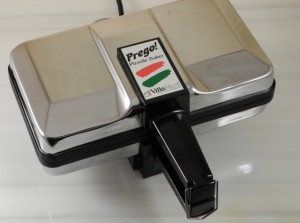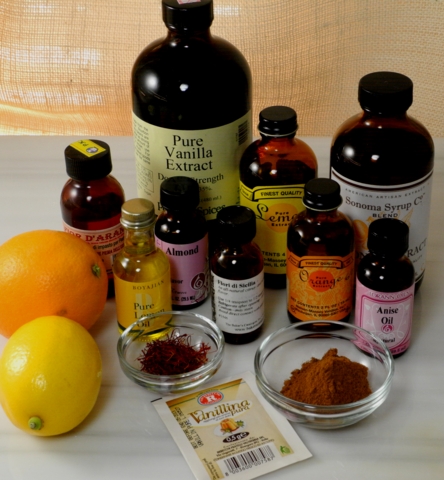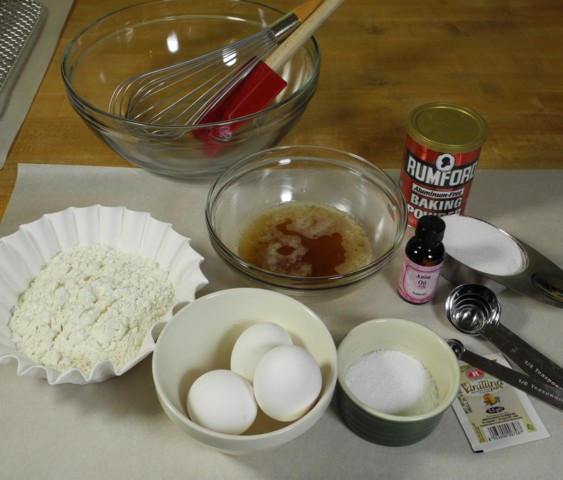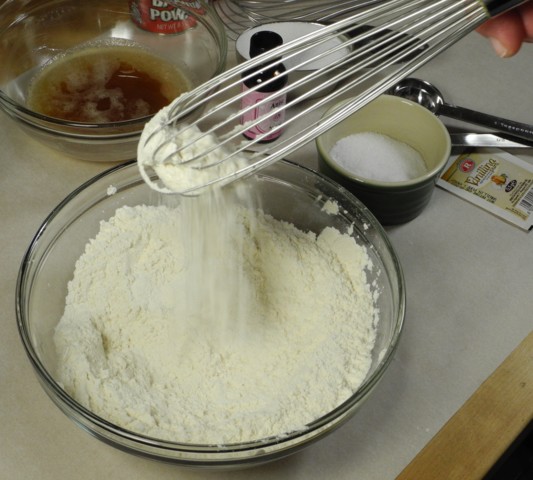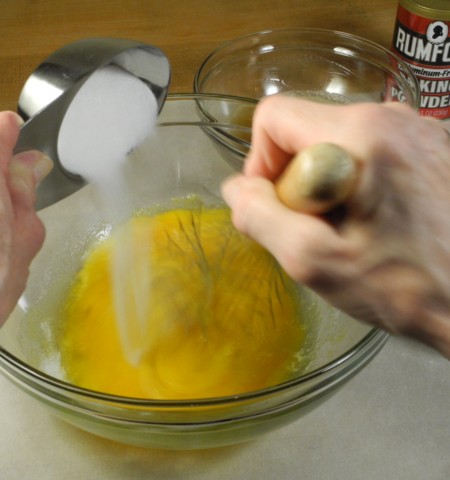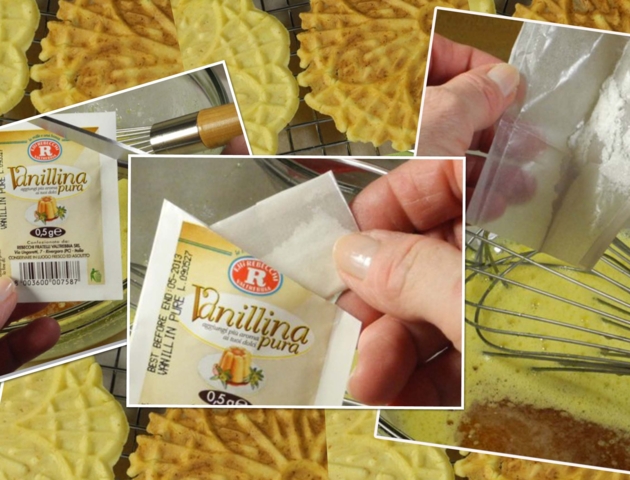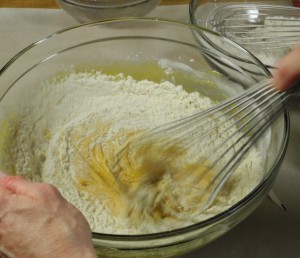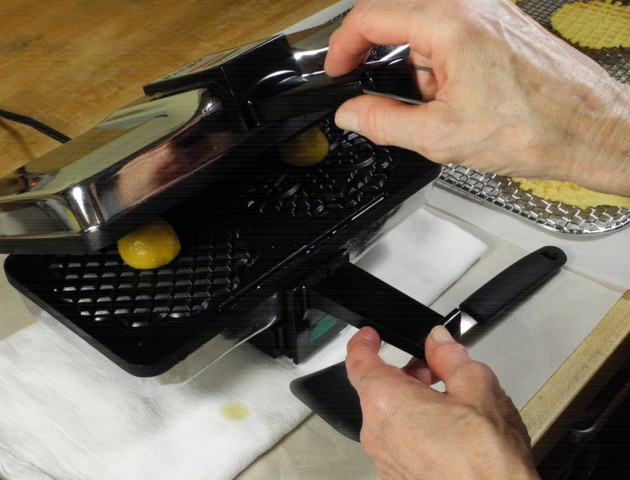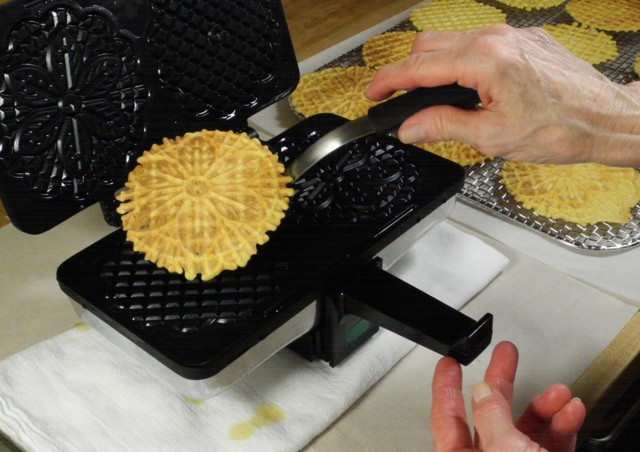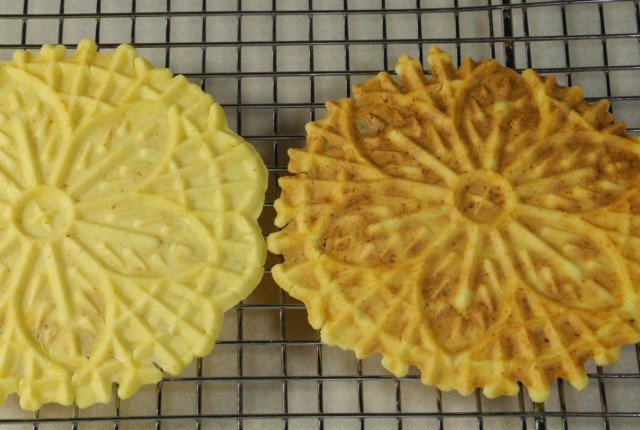Topic Index
The font size for a topic word is sized by the number of articles that reference that topic. The more articles the bigger the font.
Click on a word to search for posts with that topic. This page will reload with the search results.
Brown Butter Hazelnut Madeleines – French cakelets with an Italian Accent
I can hear it now. What’s a French cookie doing in a site devoted to Italian food? Well, the answer is they are good, and I was having a craving, and so I am sharing. Besides, with almond flour from Piemonte and Frangelico, these Madeleines speak with an Italian accent. These small cakelets baked in shell shaped molds have a place of honor in culinary and literary history. They made the city of Comercy famous and Marcel Proust immortalized them in his “episode of the madeleine” in Remembrance of Things Past. Read the remainder of this entry »
Corzetti: Edible Art
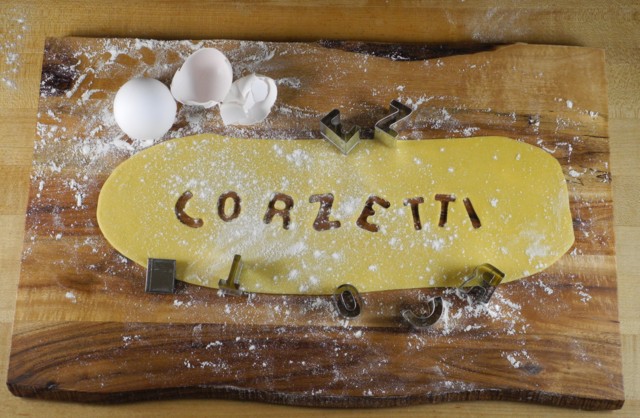
This is Part 1 of a series
For detailed information and photo essays on how to make corzetti, along with recipes, please delve further into The Corzetti Files:
The Intagliatore of Chiavari, The Corzetti Files – Part 2
Corzetti agli Spinaci con Gorgonzola, The Corzetti Files – Part 3
Where to Buy Corzetti Stamps, The Corzetti Files – Part 4
Corzetti Stampati – and a Giveaway! The Corzetti Files – Part 5
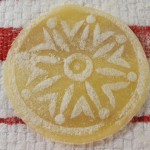 When I first saw one I knew I had to have one. To those of you who know me – no laughing, no eye rolling, please. This time it was for real. And to those of you who do not know me, my friends are laughing because when ever I see any new kitchen item I say I have to have it. But corzetti stamps and the pasta made with them are in a class by themselves. Read the remainder of this entry »
When I first saw one I knew I had to have one. To those of you who know me – no laughing, no eye rolling, please. This time it was for real. And to those of you who do not know me, my friends are laughing because when ever I see any new kitchen item I say I have to have it. But corzetti stamps and the pasta made with them are in a class by themselves. Read the remainder of this entry »
Ferratelle
Especially popular at Christmas, Easter and weddings, ferratelle are a classic Abruzzese treat. In other parts of Italy these delightful waffle cookies are known as pizzelle, nevole, catarrette, cancellette and more, but in Abruzzo where my grandfather Gaetano Crocetti was born they are known as ferratelle. The implements used to make the cookies first appeared in the late eighteenth century and were fashioned of iron, ferro in Italian – and the cookies were dubbed ferratelle. Lu ferro, as the iron is known, consists of two plates, most often rectangular, each attached to a long handle and secured with a locking mechanism. The inside of the plates, the side on which the cookies are baked, is etched with a grate-like design. Some say the name cancellette and the grate-like design were inspired by the screens in nunneries. Dough or batter is placed on one of the plates, the long handle locked closed and the plates held over an open fire. If you come across old ferratelle irons you may see initials, family insignias or names etched on the inside of one of the plates. It was customary for a family to have their own iron, often a prized wedding gift. They are beautiful tools, and after many years of use and thousands of cookies, the irons take on a stunning patina and wonderful non-stick finish, just like nonna’s cast iron frying pan. Should you be lucky enough to have an original etched iron, well then, I am envious. Very envious.
Nowadays most families have an electric ferratelle maker. They are sold in the U.S. as pizzelle makers, and they look like small waffle irons. Aluminum irons for stovetop and hearth use are also available. Both electric and stovetop types can be purchased at Amazon and many specialty shops. For an authentic iron you will need to make a trip to an antique store or nonna’s basement or attic.
 Lots of cultures make a cookie like this, the most famous being the Norwegian Krumkake. Of course we are talking about Italy where the tradition of mille nonne is at work – a thousand grandmothers – a thousand recipes, and almost as many names. All ferratelle, or pizzelle, have four ingredients in common – flour, sugar, eggs, and some kind of fat – butter, olive oil, lard, vegetable oil, even margarine. From there the road diverges. The most common flavoring is anise, either ground seeds, oil or extract, and in widely varying amounts. I like just a hint almost more for aroma than taste, but some recipes call for much more. Use what ever amount pleases you, a recipe direction the Italians express as quanto basta, q.b.
Lots of cultures make a cookie like this, the most famous being the Norwegian Krumkake. Of course we are talking about Italy where the tradition of mille nonne is at work – a thousand grandmothers – a thousand recipes, and almost as many names. All ferratelle, or pizzelle, have four ingredients in common – flour, sugar, eggs, and some kind of fat – butter, olive oil, lard, vegetable oil, even margarine. From there the road diverges. The most common flavoring is anise, either ground seeds, oil or extract, and in widely varying amounts. I like just a hint almost more for aroma than taste, but some recipes call for much more. Use what ever amount pleases you, a recipe direction the Italians express as quanto basta, q.b.
I have seen recipes that call for cinnamon, cannella in Italian. Some add vanilla powder or extract, almond oil or extract, lemon or orange zest, oil or extract, or one of my favorites, Fiori di Sicilia. Fiori di Sicilia is a potent mix of orange, vanilla and jasmine, and is available from King Arthur. And since we are talking Abruzzo, source of some of the finest saffron (zafferano) in the entire world, when a cook really wants to splurge she will add some to the mix. For an extra depth of flavor I use brown butter, butter that has been heated to the point where it melts and the milk solids begin to brown. The amazing thing about brown butter is how something so simple to make can have such a complex flavor and add so much to a dish. Whether you put it on eggs, vegetables, fish or add it to a dessert, it brings a unique depth of flavor to any dish. I think of brown butter as a great ingredient that is less than five minutes away; if you’ve got butter, a saucepan and a burner, you’ve got brown butter. But let me emphasize – this step is my addition and in no way traditional, except in my kitchen. Feel free to skip it.
Here is a short clip on how to make brown butter.
These cookies are most often left flat, but they can also be molded right after baking. You can wrap them around cannoli tubes and fill them with whipped cream, pastry cream, Nutella, honey or other filling. You can also form them into cones by wrapping the still hot cookie around a wooden cone mold.
Ferratelle recipes produce every consistency from malleable doughs to loose batters and all points in between. My electric unit produces circular cookies, so I form the dough into balls. If you will be using a hand held iron, either at the stovetop or the hearth, I suggest you use a recipe that will produce a dough-like, or at least a paste-like consistency. The experience will be much more pleasant and much less messy than if you use a batter. And if you are using an iron with rectangular plates, tradition dictates that you form each piece of dough into rope and then into a figure eight to ensure even coverage of the cooking surface. And the cooking time for the hand held irons? Yield to tradition – for the first side say an Ave Maria, give the iron a flip, say a Pater Noster and the cookie is done. I just love Italian food.
Gently fold in flour mixture in three additions.
Ferratelle
makes about 30
1 3/4 cup all-purpose flour
1 stick (8 tablespoons) unsalted butter, browned and cooled
1/2 cup granulated sugar
2 large eggs plus 1 large egg yolk
1 packet (una bustina) of Vanillina* OR 1teaspoon vanilla extract
anise oil, q.b.
1 teaspoon baking powder
pinch kosher salt
This recipe will produce a malleable dough. These directions are for an electric unit.
Place a towel beneath the iron to capture any fat that may leak. Heat iron.
Brown the butter. Set aside. Watch my video to learn how to make brown butter, burro nocciola to the Italians.
In a small bowl combine flour, baking powder and salt. Set aside.
In a medium bowl beat eggs and sugar until light in color.
Add melted butter, vanilla and anise oil. Combine well.
Gently fold in flour mixture in three additions. Dough will come together in a firm ball.
Pinch off a tablespoon of dough and form into a ball. Repeat with remaining dough.
Place 1 ball of dough on each plate. Close and lock lid.
Bake until steam subsides, about 35 to 40 seconds, depending on your iron and on how brown you want your ferratelle. Remove to rack to cool. If you are going to form the ferratelle into cones or tubes, do so when they are hot.
Bake until steam subsides, about 35 to 40 seconds, depending on your iron and on how brown you want your ferratelle. Remove to rack to cool. If you are going to form the ferratelle into cones or tubes, do so when they are hot.
* I like to use Vanillina Pura, a vanilla powder manufactured by Fratelli Rebecchi. It is available at many Italian markets, and online at Amazon.
Note: You can click on any picture to see a slide show!
I have no affiliation with any product, manufacturer, or site mentioned in this article.
